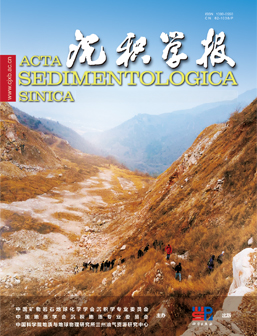Source-sink System Coupling and Sedimentation Filling Process of Large Sublacustrine Fan in the Southeast Slope of Bozhong Depression
doi: 10.14027/j.issn.1000-0550.2024.004
- Received Date: 2023-11-16
- Available Online: 2024-03-20
-
Key words:
- sublacustrine fan /
- channel /
- sedimentary characteristics /
- developmental pattern /
- the third member of Shahejie formation /
- sources-sink system /
- Laizhou bay sag /
- Bohai Sea area
Abstract: Aiming at the problem of unclear fan formation mechanism and sedimentary filling process under the condition of no well, from the perspective of source and sink system, three-dimensional seismic data were used to comprehensively analyze the denudation capacity and transport path of the source area of Bonan low bulge, and the sedimentary response characteristics and coupling mechanism of the large sublacustrine fan in the southeastern slope of Bozhong depression were clarified. The developmental model was summarized. The results show that: (1) The second of Dongying sequence is in the transition stage of lake basin fault depression, which can be divided into two tertiary sequences, in which the sublacustrine fan mainly developed in the highstand systems tract of the lower second of Dongying sequence; (2) The denudation flux in the eastern part of the Bonan low bulge is greater than deposition flux of the subestrustrine fan. The large subestrustrine fan is mainly influenced by the near province-source, and the braided river delta formed in the high part of the uplift does not pass through, and is discharged under the depositional break of the slope along five transport channels spreading from south to north. The coupling of near source supply, transport channel and sedimentary slope break formed a large contiguous lacustrine fan deposit. (3) The sedimentary filling of sublacustrine fan is controlled by the location of restricted palaeogeomorphology and the size of the space that can be accommodated. Among them, the early restricted paleogeomorphology formed A large space, and the fan sand body of the lake bottom was preferentially unloaded, forming three fan sediments, A, B and C. Due to the spatial limitations on both sides and the strong hydrodynamic conditions, the seismic facies showed the characteristics of chaotic downcut waterways and lateral migration superimposed, and the sand body formed was relatively rich in sand. With the inflow of gravity flow, the space that can be contained gradually decreases, and the gravity flow overflows along the recharge channel to the center of the open lake basin, forming two fan bodies D and E. Due to the dilution of water concentration and the change of paleo-geomorphology, the energy gradually weakens. The seismic phase has the characteristics of laminary-strong amplitude reflection, the channel features are not obvious, and the sand richness is moderate. The late source supply and energy are weak, and compared with the local erosion and reconstruction of the early fan, the earthquake shows weak amplitude reflection, which is dominated by the muddy channel. The large-scale sublustrine fan has the spatial and temporal distribution and evolution law of early restricted filling, mid-stage overflow adjustment and late erosion transformation, which constitute the development characteristics of transverse continuous and vertical multi-stage superposition. The three fan bodies A, B and C below the first stage have good sand-rich, shallow burial, good oil and gas migration and accumulation conditions, and good reservoer-cap combination. The sweet area of C-fan is large, which is an important target for lithologic reservoir exploration in Bohai sea in recent years.
| Citation: | Source-sink System Coupling and Sedimentation Filling Process of Large Sublacustrine Fan in the Southeast Slope of Bozhong Depression[J]. Acta Sedimentologica Sinica. doi: 10.14027/j.issn.1000-0550.2024.004 |






 DownLoad:
DownLoad: